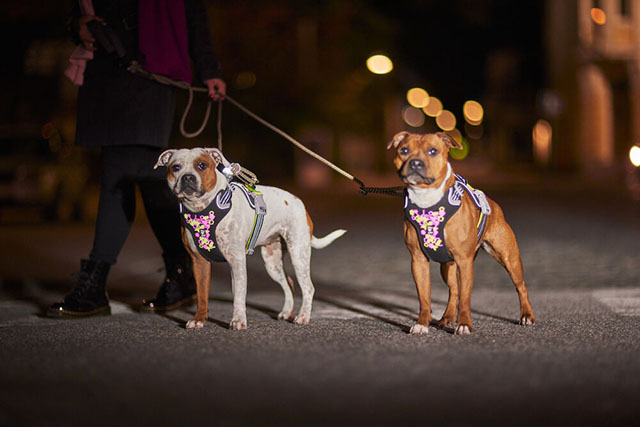Table of Contents
- Recognizing the Value of a Correctly Fitted Harness
- Measuring Your Dog for the Perfect Fit
- Adjusting the Harness for Maximum Comfort
- Integrating a Harness into Daily Walks
- Precautions to Avoid Common Mistakes
- Understanding Different Types of Harnesses
- Maintaining Your Harness for Longevity
- Learning from Others: Expert Tips and Advice
Using a harness correctly ensures both comfort and safety for your dog. Please choose the right fit to prevent chafing or slipping and introduce it gradually to build positive associations. Adjust the straps to ensure a tight, secure fit without limiting mobility. Regularly inspect the harness for wear, and always pair it with a leash suited to your dog’s size and energy level.
Recognizing the Value of a Correctly Fitted Harness
A well-fitted harness is more than just a tool—it’s a gateway to safer, more enjoyable outdoor experiences with your furry friend. Unlike traditional collars that can exert pressure on a dog’s neck and windpipe, a properly designed dog harness distributes pressure evenly across the body. This can significantly reduce the likelihood of injuries during jostling or pulling incidents. Additionally, controlled pressure contributes to better behavior, making walks more harmonious and enjoyable.
A harness is essential for daily walks and emergencies, providing a secure connection for startled or excited dogs. It minimizes escape risks and enhances peace of mind, ensuring your pet remains safe under your supervision.
Measuring Your Dog for the Perfect Fit
Accurate measurements are crucial for securing a perfect-fit harness for your dog. Place the tape at the widest part of the dog’s chest and neck, allowing fur thickness. Poorly sized harnesses can restrict movement or allow escape. Consistent measurements, especially for young or weight-changed dogs, ensure the harness fits correctly and comfortably throughout the dog’s life stages. Regular measurements are also essential to avoid discomfort or chafing.
Adjusting the Harness for Maximum Comfort
To ensure your pet’s comfort during activities, it’s crucial to fine-tune the fit of the harness after selecting the correct size. Adjust the straps gradually, observing the harness’s placement around the chest, shoulders, and neck. Ensure two fingers can comfortably slide between the dog and the harness. Breed-specific adjustments may be necessary for deep-chested breeds like greyhounds or boxers. Taking the time to make these adjustments ensures your pet remains comfortable during their activities.
Integrating a Harness into Daily Walks
Integrating a harness into your routine can transform ordinary walks into delightful experiences. To create a good association, let your dog wear the harness for brief periods around the house while rewarding them with praise and food. When transitioning to outdoor use, start with short sessions to ensure you and your dog are comfortable with the new routine. A well-adjusted harness not only bolsters safety but can also transform the dynamics of the walk, reducing pulling behaviors and fostering better communication between you and your pet.
Precautions to Avoid Common Mistakes
Despite the straightforward nature of harness usage, it still has its pitfalls. Common mistakes, such as selecting aesthetic appeal over function or failing to adjust the fit regularly, can compromise your dog’s safety and comfort. As this guide highlights common mistakes with harnesses, frequent checking of straps and buckles can prevent unforeseen mishaps.
Furthermore, introducing the harness in a stress-free setting can help minimize resistance and build a routine anchored on trust and comfort.
Understanding Different Types of Harnesses
Harness preferences can vary based on the dog’s specific needs and personality. Back-clip harnesses are straightforward, excellent for easy-going dogs, and particularly favorable for smaller breeds. Front-clip harnesses redirect pulling energy back towards the owner, a compelling psychological cue for dogs inclined to bolt forward. Dual-clip harnesses offer versatility, allowing for multiple leash configurations catering to varying outdoor activities and training regimens.
Understanding these types allows owners to tailor harness choices to their dog’s unique behavioral patterns and activity levels.
Maintaining Your Harness for Longevity
Regular maintenance of a harness is crucial for its longevity and hygiene. Frequent examinations can identify wear and tear early on, averting accidents. Cleaning the harness regularly, following the manufacturer’s guidelines, prolongs its life and reduces allergens for sensitive dogs. Material choices like nylon can significantly impact durability and maintenance frequency. Specific cleaning techniques may be required for durability and appearance.
Learning from Others: Expert Tips and Advice
Expert tips can offer valuable insights into maximizing harness utility. Trainers and veterinarians often advocate for harnesses as a training aid, citing how they can improve leash behavior over time. Comprehensive advice from trusted sources like AKC’s dog harness guide helps owners feel assured in their choices, knowing a wealth of professional knowledge supports them.
Ultimately, a harness invests in your pet’s security and welfare, guaranteeing a comfortable and safe experience during your outdoor travels.






